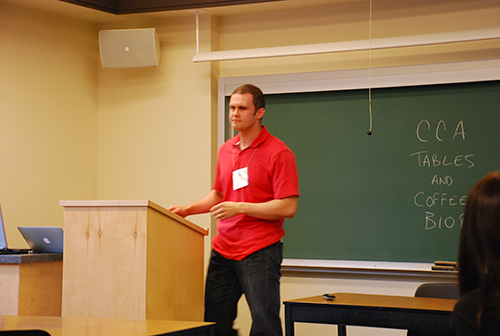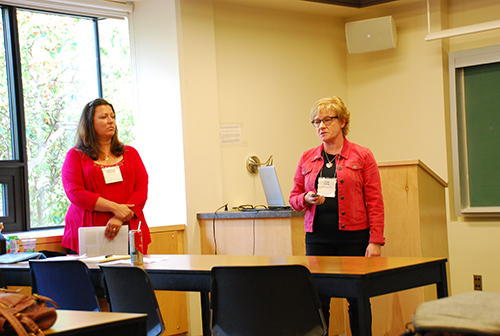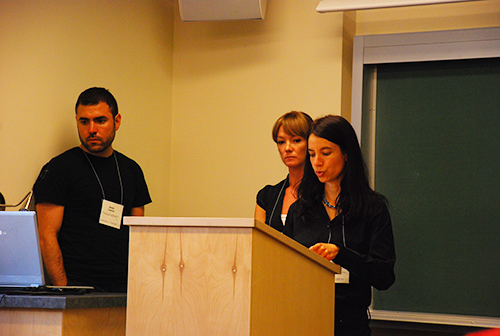Andrina Fawcett http://twitter.com/thecardigangirl
Personalized learning with dashboard
Brad King of Simon Fraser University discussed how he changed typical collaboration practices used to build technology in his presentation “Designing a 21st Century Learning Experience”. King, developer of the customized digital dashboard used by the West Vancouver school district, allows students to create their own digital space which includes a school centered social network, assignment notifications, built in calendar with assignment alerts, and customizable skins. “This allows students the opportunity to have a digital record of their school career”, King stated, but perhaps more importantly, “as a teacher if you see a student struggling or excelling you can personalize assignments and have it appear just to them, to a group, or an entire class. It allows for a greater degree of personalized learning.”
While policy asks teachers to empower students through technology, it remains unclear how to actually do the empowering. Hired by the West Vancouver school district to create a system that worked, King avoided the typical, and often unproductive, model of design wherein specs are given to developers; systems are built, and then abandoned. Instead, the team utilized design thinking to focus on creating solutions in a economically viable way to meet users needs. By sitting in on classes as an educational assistant he took notes and used observation to gather a sense of what was needed. “It was ethnography in practice,” King said with a laugh. By then inviting users back into an inclusive space for collaboration, mind-mapping software was used to work through arguments as they arose. “We asked the users to write short stories of how they would imagine interacting with the software, and we then used them as a method for extracting requirements.”
Flipping the classroom
Samantha Pattridge and Linda Pardy of the University of the Fraser Valley think that the "Flipped Communications Classroom" is one way to approach the 21st century learning experience. UFV features a lively communications minor that was home to their flipped classroom trial run.
What is a flipped classroom you ask? Flipped classrooms move lecture material online in the form of notes, podcasts, and video casts, and free up class time for workshops or hands-on-learning. While their data analysis is ongoing from the 2012-2013 trial year, their initial findings were that students were under-prepared for technology interaction, that the program required self-directed students, and that the opportunity for “green” practices was a buy-in for students. Additionally, the online lecture format proved to be a heavy workload for faculty, “but I think it was exceptionally valuable” stated Samantha Pattridge. Linda Pardy continued, “the hands-on approach helped the students improve, and while some were not ready for that level of independence, by the end of the course many had recognized how far they had come and that this experience had helped them grow.”
Building the university brand with social media
Anabel Quan-Haase, Amit Louis, Tara Price of Western University asks, how do we draw in an audience? Their presentation “Building the University Brand with Social Media: Social Capital and the Ethics of Connectivity” looked at adoption rates of social media platforms for universities (who average five social accounts each), convenience vs privacy, and appropriateness.
By confining their sample to the top 25 and bottom 25 universities of the Times Higher Education university rankings, the exploratory study found that social media usage for universities was most prevalent in North America. North American schools also bolstered a 100% adoption rate for LinkedIN, a connection the team speculated as the ideal platform for an alumni network. Preliminary conclusions surprisingly found that universities who post YouTube videos have the highest median reach, with top schools observing almost 400,000 views, as opposed to just over 100,000 views for the bottom schools. A static text-based tweet or Facebook post only reaches a very small fraction of that viewership.



